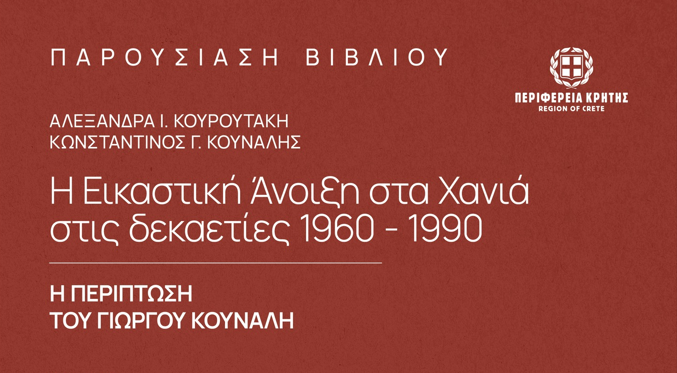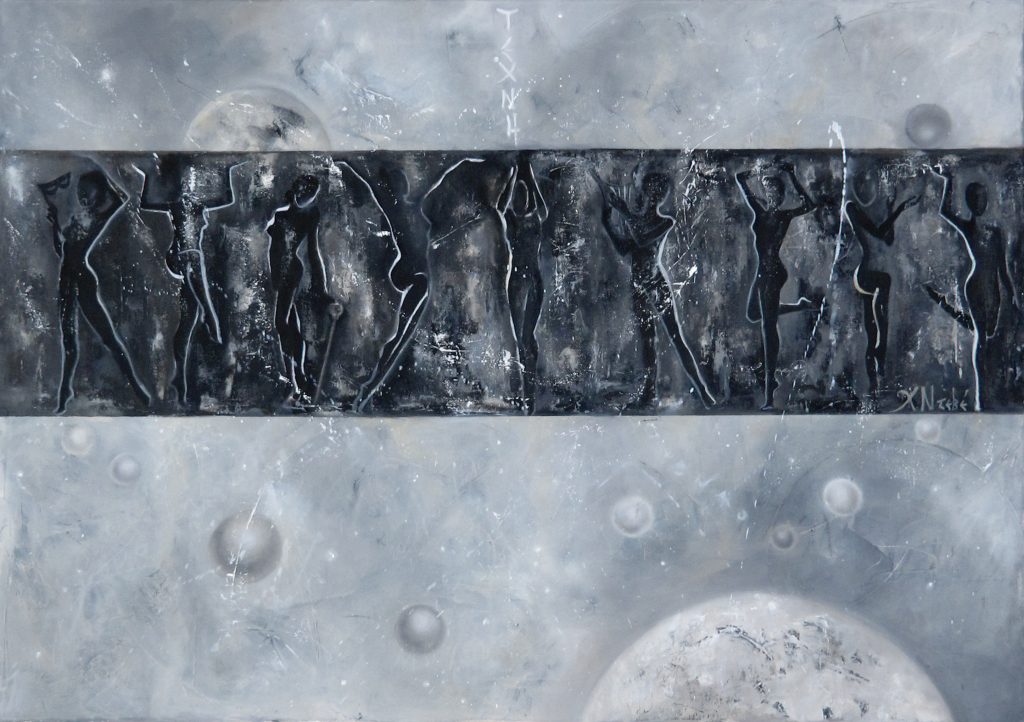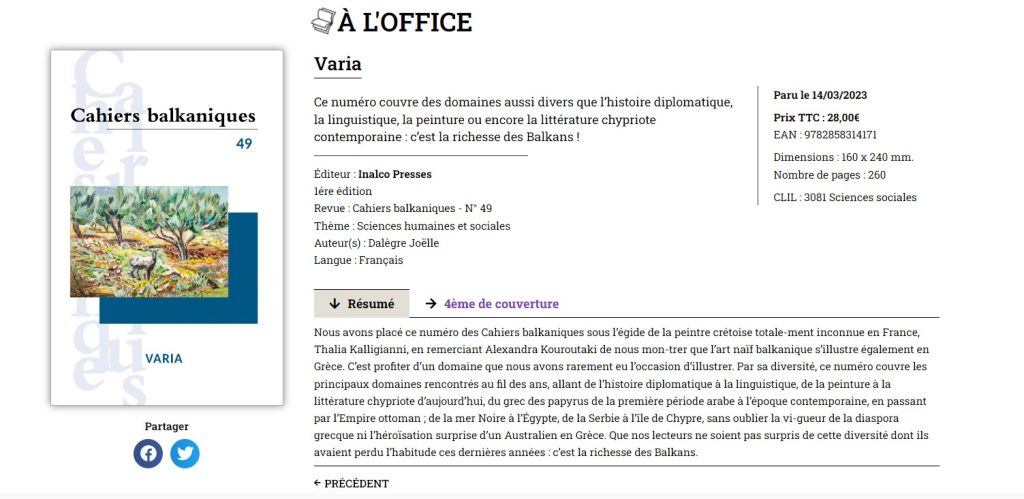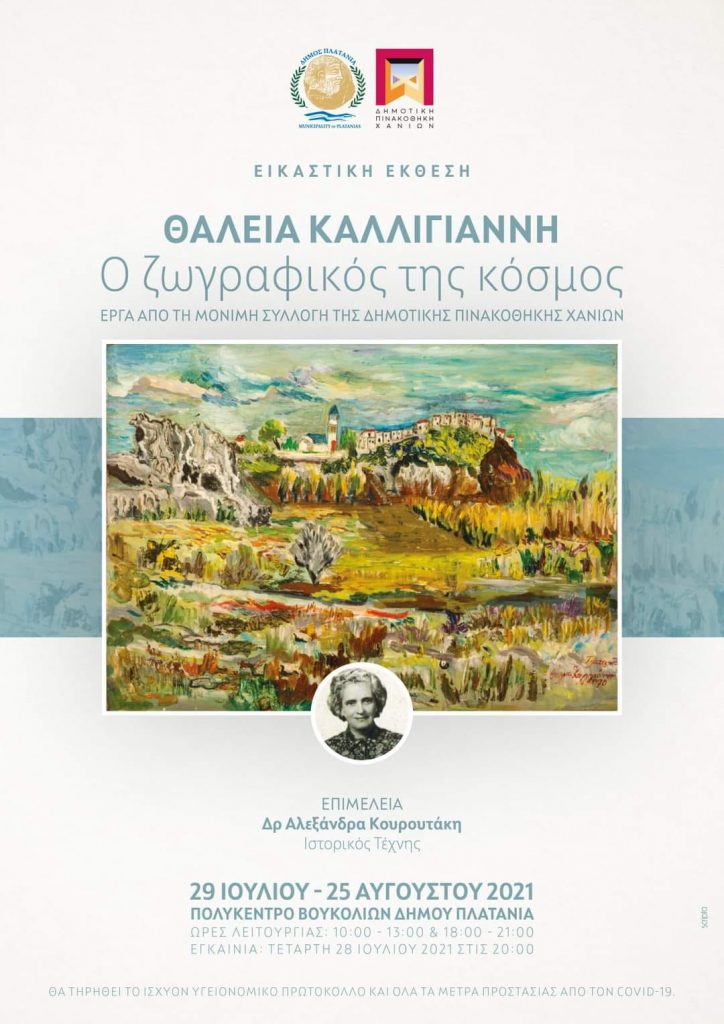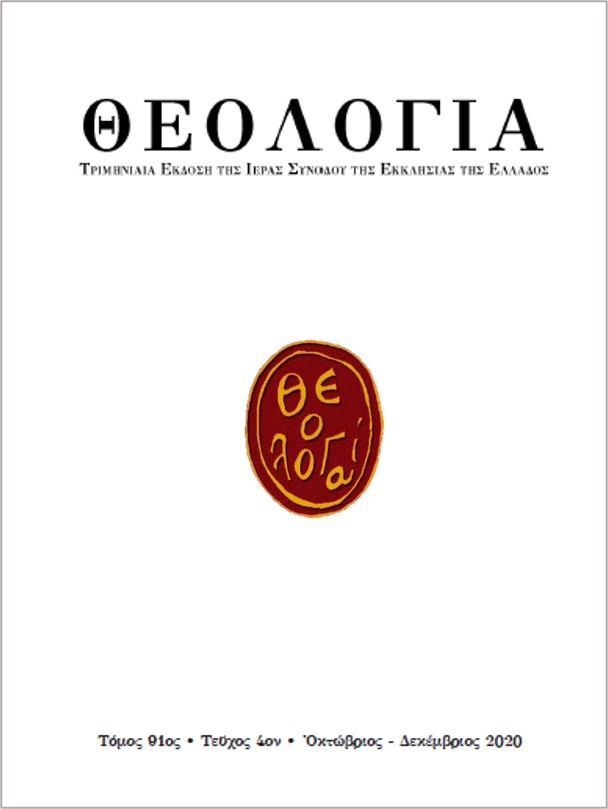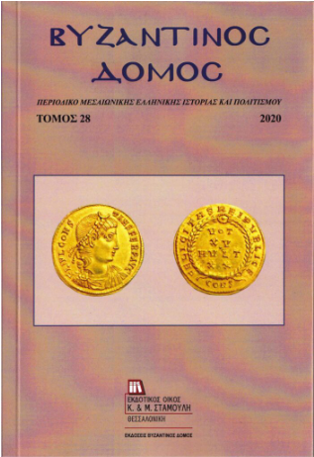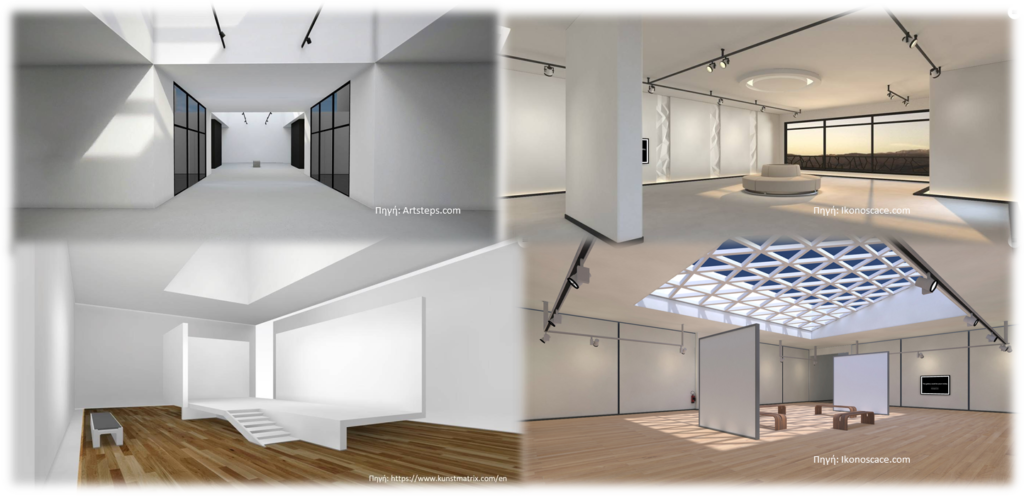Virtual Exhibition under the auspices of the Pinacothèque Vogiatzoglou (Pinakothiki.Vogiatzoglou)
Inauguration online, Thursday, February 4, 2021, at 5.30 p.m., on the artist’s website elenimanolarakiartworks.com
Exhibit Text by Dr. Alexandra Kouroutaki, Art historian, Member of specialized Teaching personnel, School of Architecture, Technical University of Crete
Eleni Manolaraki’s new exhibition entitled “In Life as in Art” is structured into three thematic sections, including watercolor and tempera landscape paintings, an installation (set in her studio), and pencil, pen and ink drawings.
Section: “From the mountains to the Mountain”.
With her new exhibition, Manolaraki highlights her deep, honest and essential relationship with nature.Ther collection of landscape paintings includes 11 older compositions and 44 more recent works on the theme of mountains. Manolaraki is inspired by nature from which she creates a personal code, a visual language testifying to numerous experiments and pictorial research in the representation of the landscape.
The evolution in the representation of the mountains is of particular interest in the case of Manolaraki`s art, especially the transition from figuration to the abstract, geometric and symbolic representation. Manolaraki often uses symbols, by introducing into her compositions imprints (of the palms of the hand and of the feet) which semiotically refer either to the wings or to the traces left by the artist in art, nature and life. She often uses words, phrases, or verses from poems. Sometimes a large part of her compositions consists of texts, acquiring a more conceptual orientation.
Manolaraki is a talented colourist and creator of poetic art. The unrealistic colors with which she “dresses” the shapes of the mountains contribute to this effect. Often, the contrasts between warm and cold tones and complementary colors recall Chagall’s “colorful dreams” [1], although in Manolaraki’s case, the colors and the gestural improvisation are means of expression consciously and deliberately used. Her landscape paintings emphasize the artist’s role as a” poet”, – creator of new worlds between reality and fantasy – and highlight the artist’s energetic and spiritual connection with the universe [2].
Section: “What are our wonderful hands doing?”
Manolaraki organizes an art installation [3] as a framework for action in which the artist herself and eventually the spectators participate (according to the aesthetic demand for the abolition of the boundaries between art and life) with the aim of creating intense impressions on participants. The installation consists of photographs, paintings and drawings on paper (still-life, expressionist self-portraits and symbolic compositions) that the artist hangs and rearranges on the wall of her studio, each time lending a different meaning to the whole. It is a kind of a mental and philosophical “game” with a high element of experimentation and improvisation, an “art happening” [4] since participation and interaction with the spectators are sought.
Manolaraki has the habit of “capturing” the trace of the gesture, by painting – with her hands – shapes with colors that refer to plants or flowers, as if she would have liked to keep nature tenderly in her hands, or even to invoke her experiences of rural life and highlight her relationship to the homeland. The art installation constitutes a sort of “manifesto”, a declaration in defense of life in nature. Manolaraki’s ecology is rooted in a political context and convincingly evokes the need to reconnect with nature. The symbols and semantic codes used make her artwork both elegiacally poetic and politically current.
Section: Drawings
The section includes 70 pencil, China ink and pen drawings. Manolaraki draws her self-portraits (as a subject and object of her art) with a strong expression, without any narcissistic intention, but according to an existential need for introspection and psychic exploration. Perhaps to confirm Sartre’s words about the other’s gaze: “We are at the mercy of the other’s gaze. The gaze of the other makes me exist as me”. [5]
In some drawings, Manolaraki connects the familiar with the stranger, involving the spectators in a process of existential questioning. Her poetics consists of poor materials from everyday life (such as soil, leaves, wood, objects, etc.) raising ontological questions about what is art and life. In her drawings, art plays the role of life and life “paints” through the theme of nature and the dynamics of the portraits.
In conclusion, Manolaraki’s painting is essentially poetic. Her pictorial universe presents the positive and luminous version of nature through the use of lyrical colors. Her artworks develop a “semiology of the landscape”, extremely effective both mentally and emotionally. She is a sensitive and contemplative artist who “opens up accounts with existence [6]”. Her soul rejoices in the proximity of nature, in the White Mountains where she inhales “the aromas of fennel and stars” or in the garden of her house (in Meskla, Kydonia) painted with the sincerity of a child and the sensitivity of a poet.
[[1]]For Chagall’s “colorful dreams”, see Pierre Gianadda Foundation. (2007). Chagall, between heaven and earth. Martigny: Pierre Gianadda Foundation, p. 39, p. 47. See Walther, I. and Metzger, R. (2003). Marc Chagall The painter-poet. Taschen – Köln.
[2]For the mountains as a symbol of spiritual contact with infinity, see Saraydarian Torkom, Torkom Saraydarian – Autobiography, TSG Publishing Foundation, Inc., 2012 (ebook).
[3]For art installations as artistic genres of organization and intervention in space, see Charalambidis Alkis, L’art du XXe siècle, vol. III, The Postwar Period, University Studio Press, Thessaloniki 1995.See Daskalothanasis Nikos, Kotidis Antonis, Greek Visual Arts, Greek Open University, Patras, 2020, p. 122-128.
[4]Daskalothanasis Nikos, Kotidis Antonis, Greek Visual Arts, Greek Open University, Patras, 2020, p. 124.
[5]For “The gaze of the other” in Sartre’s philosophy, see Audet-Cayer Philippe, The status of freedom in existentialism, beyond critical theory, Memory, Faculty of Arts and Sciences, Department of philosophy, University of Montreal, August 28, 2012, p. 19. See Sartre Jean-Paul, Being and Nothingness: an Essay on Phenomenological Ontology, Gallimard, 2004.
[6] See Karouzos Nikos, according to an interview. Signed typed response to D. Kalokyris’ question: “Why are you writing”?, translated in French by D.T. Anali and published in the special homage to modern Greek culture of the French review Les Nouvelles Littéraires, ed. Larousse, vol. 2699, August 9-23, 1979. “The true poet opens accounts on existence – I believe so – and his vision, chimerical if you will, is to break the chains of reality.”




